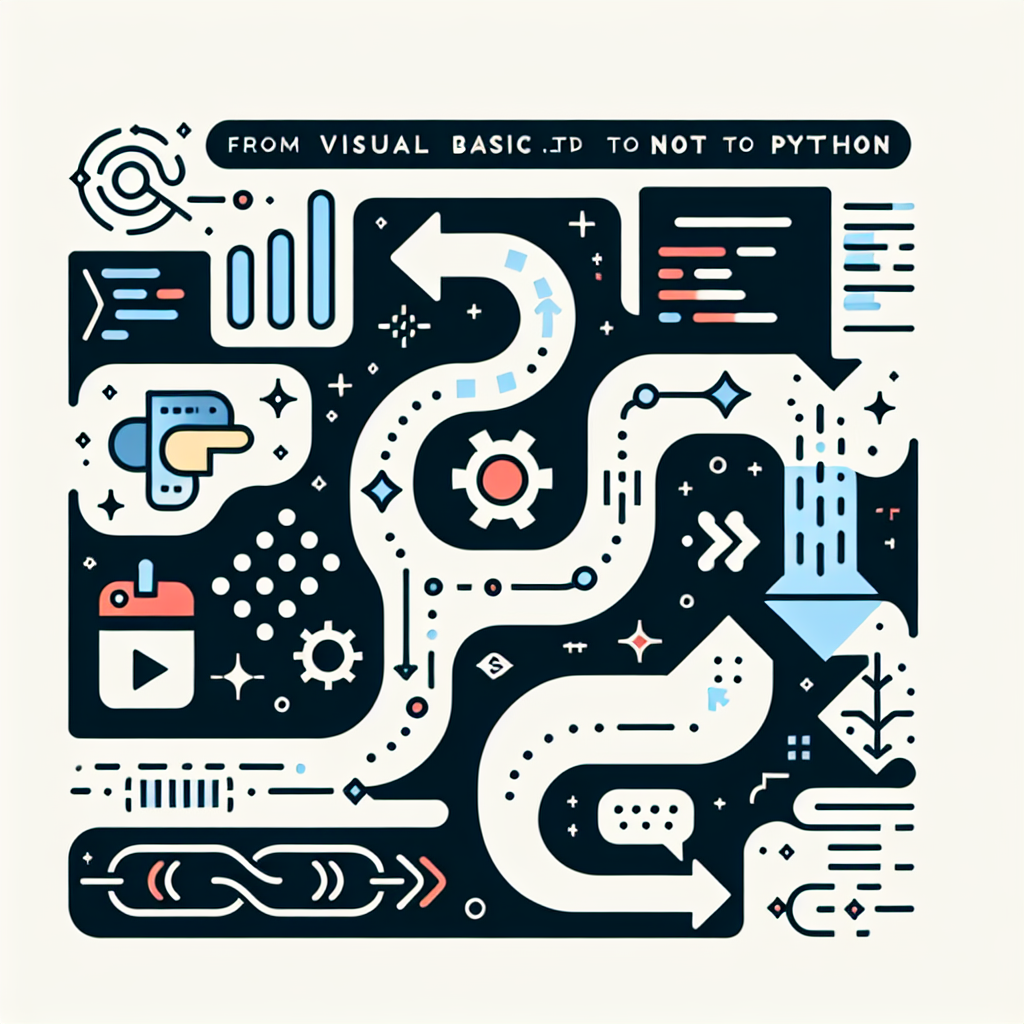Convert Visual Basic .NET to Python Easily Online
Effortlessly convert Visual Basic .NET to Python with our powerful tool. Streamline your code migration and enhance productivity. Try it now for seamless transitions!
Source Code
Converted Code
Output will appear here...
Transform your code seamlessly with our Visual Basic .NET to Python conversion tool. Effortlessly migrate applications to a modern, versatile language, enhancing performance and maintainability. Ideal for developers looking to integrate Pythons extensive libraries and simplify cross-platform development, this tool ensures a smooth transition with minimal manual adjustments.

Visual Basic .NET to Python Conversion Tool Link to this section #
Efficiently transitioning from Visual Basic .NET (VB.NET) to Python can significantly streamline your development processes. This conversion tool is designed to aid developers in translating VB.NET code into Python, ensuring smoother integration and code migration. Below are key features and considerations when using the tool.
Key Features: Link to this section #
- Automated Syntax Translation: Converts VB.NET syntax to Python, maintaining code logic.
- Data Type Mapping: Translates VB.NET data types to Python equivalents, such as
IntegertointandStringtostr. - Function and Method Conversion: Adapts VB.NET methods to Python functions, preserving functionality.
Benefits: Link to this section #
- Time Efficiency: Speeds up the migration process, reducing manual coding efforts.
- Accuracy: Minimizes human error, ensuring the integrity of the original code logic.
- Cross-Platform Compatibility: Facilitates code execution across different operating systems supported by Python.
Example Conversion: Link to this section #
Here's a simple example demonstrating the conversion of a VB.NET code snippet to Python:
VB.NET Code:
Public Sub GreetUser(name As String)
Console.WriteLine("Hello, " & name)
End Sub
Converted Python Code:
def greet_user(name):
print("Hello, " + name)
Additional Considerations: Link to this section #
- Error Handling: Ensure VB.NET exceptions are properly mapped to Python’s
try-exceptblocks. - Library Equivalence: Identify and map VB.NET libraries to Python libraries, such as using
pandasfor data manipulation tasks.
Resources: Link to this section #
Leverage this tool to streamline your code migration from VB.NET to Python, capitalizing on Python's versatility and widespread adoption.
Frequently Asked Questions
What are the main differences between Visual Basic .NET and Python?
Visual Basic .NET (VB.NET) is a statically typed, object-oriented language that is part of the .NET framework, primarily used for Windows application development. It features a syntax that is easy to understand for those familiar with BASIC languages. Python, on the other hand, is a dynamically typed, versatile programming language known for its readability and wide range of applications, from web development to data science. Python's extensive library support and cross-platform capabilities make it a popular choice for both beginners and experienced developers.
How can I convert a Visual Basic .NET application to Python?
Converting a Visual Basic .NET application to Python involves rewriting the code in Python syntax and utilizing Python libraries to match the functionality provided by .NET libraries. There is no direct automatic converter, so understanding both languages is crucial. Start by identifying the core functionality and dependencies of the existing application, then map these to equivalent Python modules and frameworks. Tools like Python for .NET (pythonnet) may help bridge certain functionalities between .NET and Python during the transition.
What are the benefits of switching from Visual Basic .NET to Python?
Switching from Visual Basic .NET to Python offers several benefits, including access to a vast ecosystem of libraries and frameworks, enhanced portability across platforms, and a strong community support. Python is renowned for its simplicity and ease of learning, making it ideal for rapid development and prototyping. It is also highly favored in areas such as data analysis, machine learning, and artificial intelligence, providing developers with opportunities to expand their applications into these growing fields.